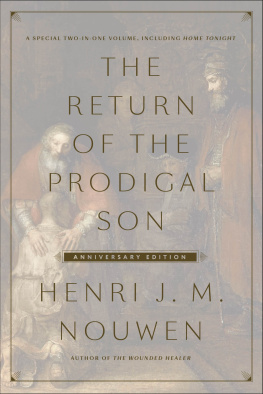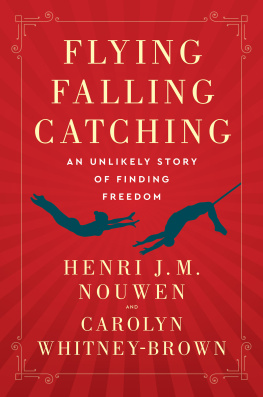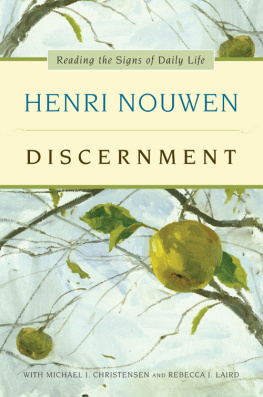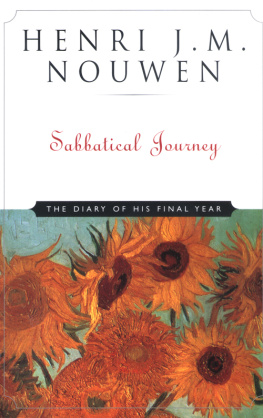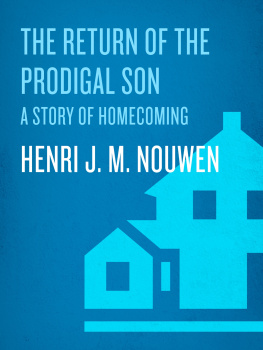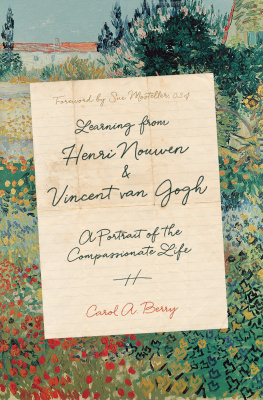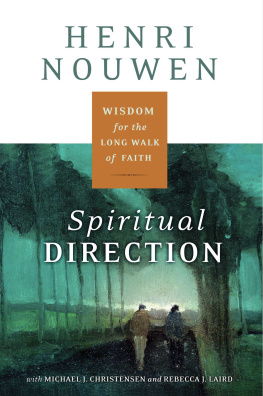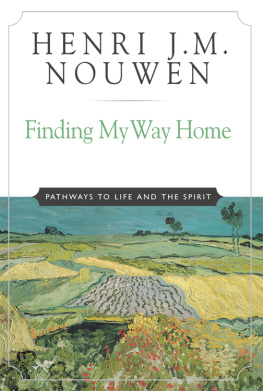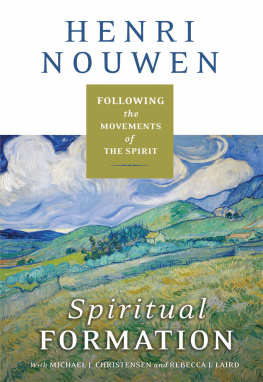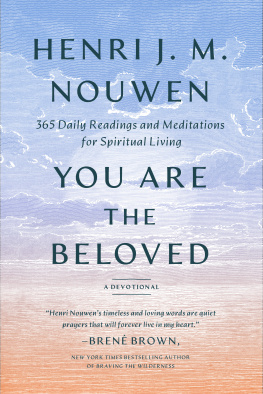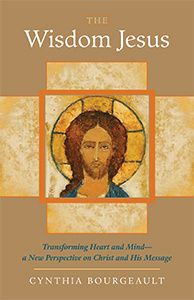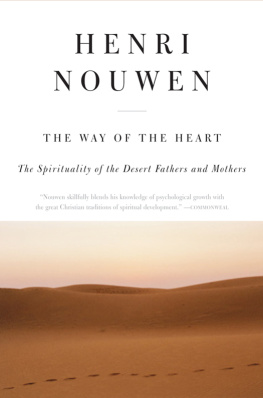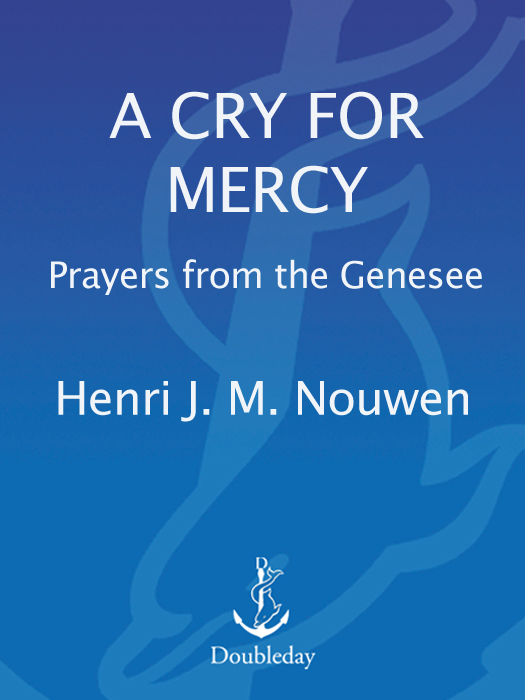O THER B OOKS B Y
H ENRI J. M. N OUWEN
Aging
Compassion
Creative Ministry
A Cry For Mercy
Lifesigns
The Genesee Diary
Reaching Out
The Road to Daybreak
The Wounded Healer
In the Name of Jesus
Beyond the Mirror
Behold the Beauty of the Lord
Gracias: A Latin American Journal
Heart Speaks to Heart
Love in a Fearful Land
Making All Things New
The Way of the Heart
The Living Reminder
Out of Solitude

A N I MAGE B OOK
PUBLISHED BY DOUBLEDAY
a division of Random House, Inc.
1540 Broadway, New York, New York 10036
I MAGE , D OUBLEDAY , and the portrayal of a deer drinking from a stream are trademarks of Doubleday, a division of Random House, Inc.
The Library of Congress has cataloged the 1983 Image edition as follows:
Nouwen, Henri J. M.
A Cry for Mercy.
1. Prayers. I. Title. II. Title:
Prayers from the Genesee.
BV245.N69 242.8 80-2563
AACR 2
This Image edition published 2002.
eISBN: 978-0-385-50549-9
Copyright 1981 by Henri J. M. Nouwen
Illustrations Copyright 1981 by Doubleday, a division of
Random House, Inc.
All Rights Reserved
v3.1
In Grateful Memory of
Toon Ramselaar
Acknowledgments

This book of prayers would not have been published without the help and encouragement of many people. I would like to thank my friends at the Covenant Peace Community in New Haven and the Sojourners community in Washington, D.C., as well as John Garvey, for their help in selecting, from the many prayers I had written, those prayers that might have meaning for people other than myself. Their suggestions and recommendations were invaluable for the final shape of the text. A sincere word of thanks also goes to Gregory Youngchild and John Mogabgab for their help in the final phrasing of these prayers, and to Robert Moore and Carol Plantinga for typing and retyping the manuscript. As always, I owe a special word of thanks to Phil Zaeder for critically reading the manuscript and making many helpful suggestions. Earl Thollander made the powerful drawings, and Robert Heller and Diana Klemin of Doubleday spent much time and effort working on the form and layout. I am very grateful for their contributions.
Most of all I wish to thank Joseph Nez for his important role in the making of this book. He made the final selection of the prayers, suggested the chapter divisions, and identified the major movements in the prayers. It was his encouragement that convinced me that the prayers could be published and read by others. I am grateful to him not only for these efforts but also for his friendship and warm support during my last three years at Yale Divinity School.
I dedicate these prayers to the memory of my uncle, Toon Ramselaar, who showed me the way to the priesthood and faithfully supported my work and vocation with his friendship and prayers until his death on January 1, 1981.
Prologue
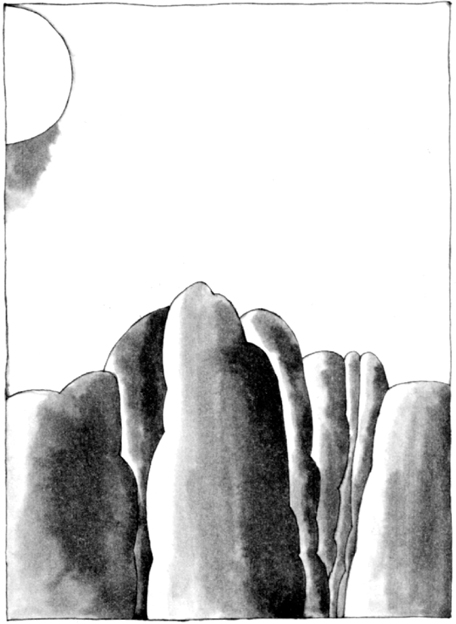
From February to August 1979, I lived with the Trappist Monks of the Abbey of the Genesee in upstate New York. It was not the first time I had stayed with them. In 1974 I had been allowed to spend seven months in their monastery, and to share day and night in their life. That first stay had been a very new experience for me. I had never lived in a contemplative monastery, and every day held surprises for me. I had to get used to rising at 2 A . M . and going to bed at 7 P.M. I had to learn how to handle hot pans in the bakery, how to detect small stones in a tub full of raisins, and how to find the right kind of rocks for the new church. But most of all, I had to become familiar with the many hours of prayer and meditation and the many ins and outs of the common life. Although I never planned to become a Trappist monk, this stay in the monastery was for me like a novitiate. Through the personal guidance of the Abbot, John Eudes Bamberger, these seven months became a time of real spiritual formation. So many things happened both inside and outside of me that I felt a strong need to keep a diary in order to help me sort out the many new experiences. When, after I returned to teaching, I showed my diary notes to my friends, my experiences proved to be much less unique than I had thought. Many could recognize their own struggles in mine. This discovery led me to the decision to publish The Genesee Diary.
My second long stay at the Abbey was very different. Instead of being new and surprising, the monastic life was strikingly familiar to me. Everything that had seemed so unusual the first time struck me as quite customary. Nothing had changed. Within a few hours I was back at the hot pans, and on Friday morning Brother Theodore welcomed me at the raisin tub as if I had never left. I needed no instructions or introductions. The same men, the same manners, and the same joyful spirit greeted me. There was nothing dull or boring about this sameness. On the contrary, the familiarity with people, places, and events allowed me to dispense with all the preliminaries and to direct all my attention to the purpose of my stay: to be with God in prayer. The rhythmic sameness of the monastic life revealed to me the sameness of the loving Lord who had been waiting for me to come back and spend some more time with him and him alone. From the moment I walked into this now so familiar milieu, I realized that there was nothing to keep me there for six months except the Lord himself. There was no longer any need for a diary, no need to record the daily events of the monastic life or the weekly meetings with the Abbot. They had not become unimportant. Rather, they had become as important as breathing and were therefore no longer a subject for daily comments.
The realization that prayer was the only reason to be and to stay at the monastery made me wonder if it might be a good discipline to write at least one prayer a day. At first this thought filled me with many uncertainties. Is my relationship with my Lord not too personal to express on paper? Shouldnt this most sacred form of human expression remain spontaneous and not be constrained by the self-consciousness of writing? Wouldnt writing make prayer more difficult? Although these questions were very real to me, they did not prevent me from following my intuition that it would be worthwhile to sit down at the end of each day and commit to simple words the prayer that was present in my heart at that moment. The result of my discipline is the prayers of which I present a selection in this book. I do this not because they teach anyone how to pray, or because they offer a method of prayer, but because they may point in their awkward powerlessness to the real and very powerful presence of the Divine Spirit who is promised to us by our Lord as a never-failing guide. It is my hope, therefore, that those who recognize in these prayers the cries of their own hearts will also recognize the quiet prayer of Gods Spirit in the midst of their own halting and stuttering words.


